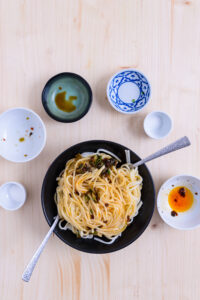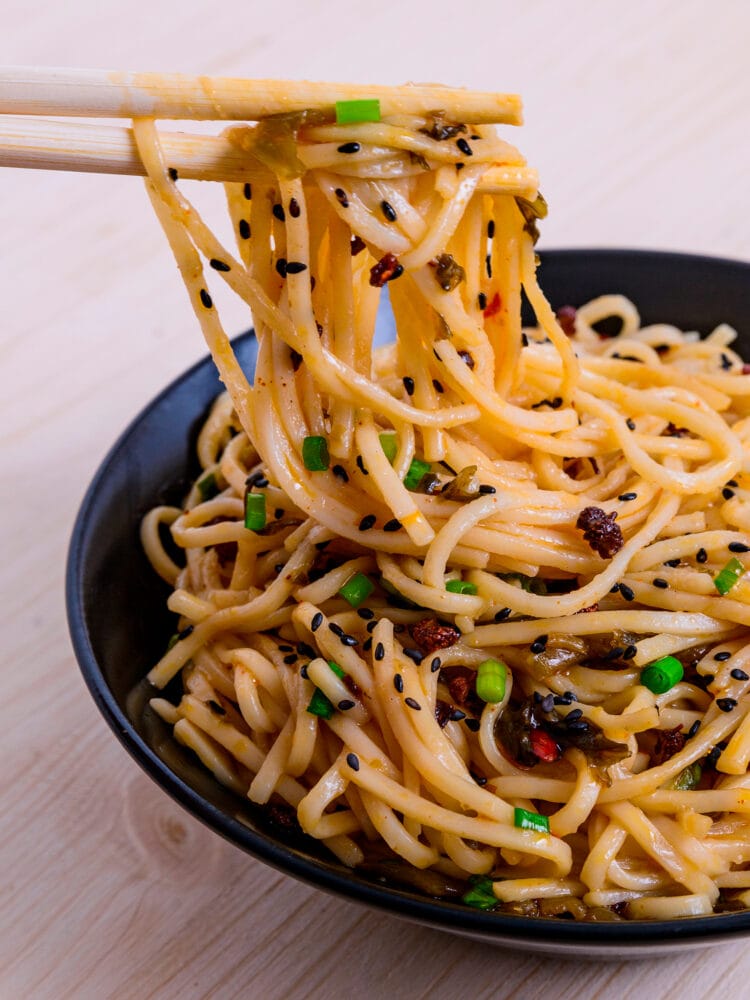Yes, you read that right. In China, in Japan, and across most of Asia, glutamate is sprinkled just like table salt.
And with good reason! It is delicious and absolutely safe; I invite you to read my article about MSG.
Back home, people tend to fall into three camps:
- People who have never heard of umami or glutamate
- Those who remain convinced it is harmful, despite the scientific consensus
- Cooks who have embraced how wonderful glutamate can be
The trouble with the third group is that we often do not know how to use glutamate beyond a handful of well-known dishes. In China, for example, many recipes treat it as an ingredient in its own right, not merely a finishing touch.
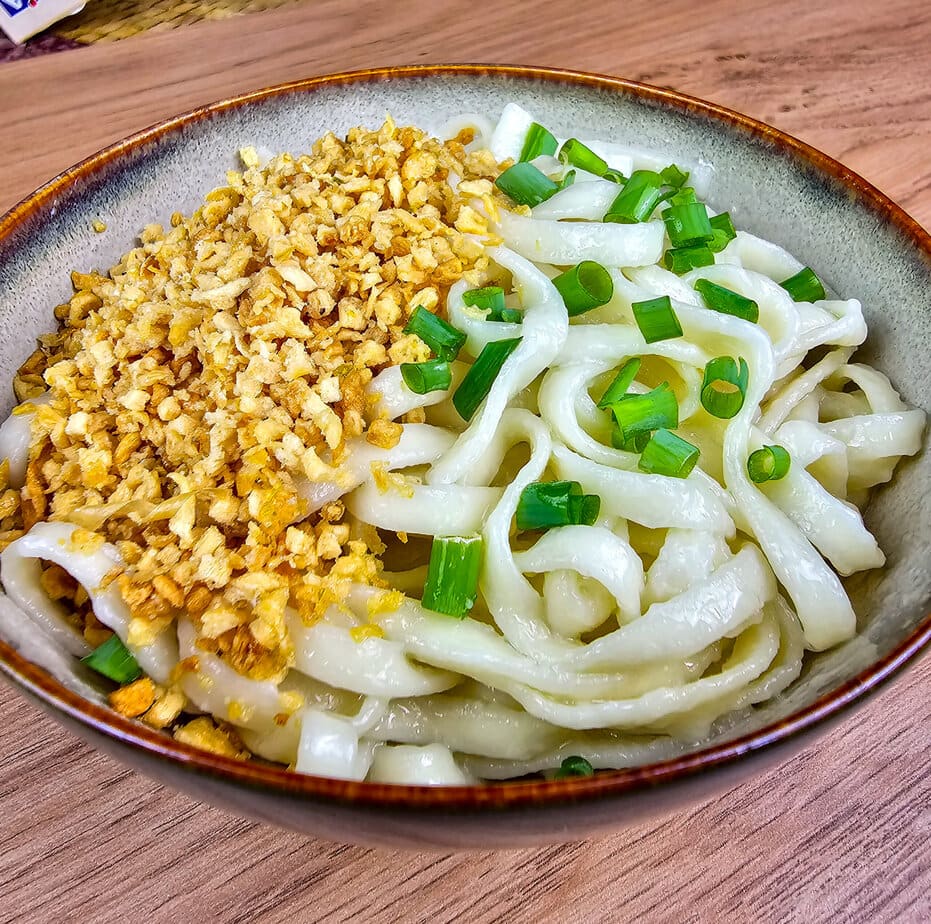
A few words about cooking with glutamate
MSG is like a secret seasoning that gives your food an extra lift. It will not rescue a failed dish, but it will sharpen the flavours that are already present, especially in foods rich in umami – the savoury note you find in dried mushrooms and well aged cheeses.
To use it right, sprinkle a small pinch at the end of cooking – just enough to give your dish a quick lift. Go easy though, too much can make everything taste flat, like a store bought ready meal.
When you are making a spicy dish like this one, MSG is your ally. It adds a gentle sweetness that rounds out the heat. If you get a little heavy handed, a pinch of cayenne will bring the flavours back into line.
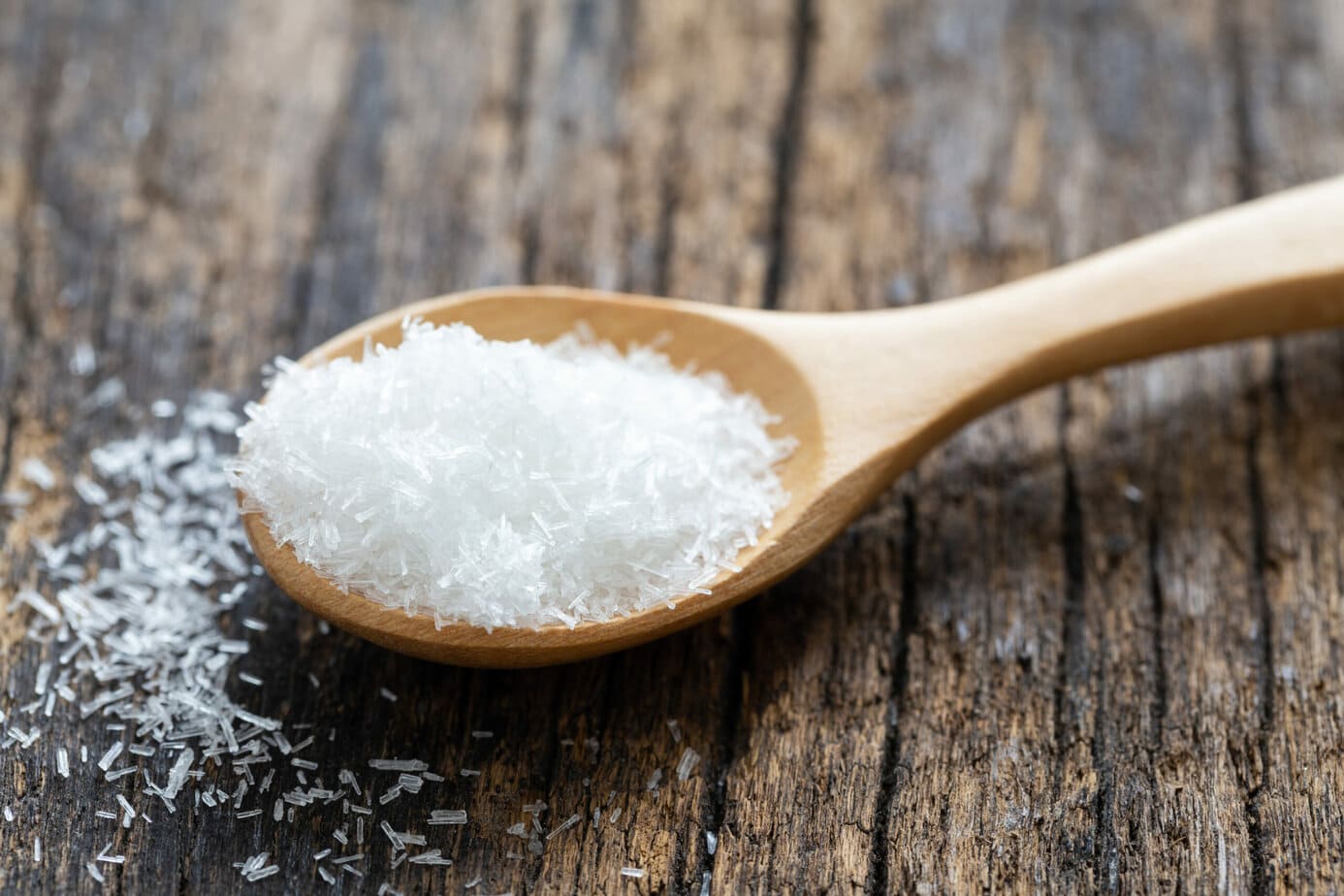
Glutamate also smooths flavours, much the way sugar softens a dessert. Add it as you would salt: just enough to pull the flavours forward, never so much that they hide.
While cooking we work to balance the different tastes. MSG, black pepper, garlic – each one helps build harmony.
Seasonings are like a kitchen first aid kit. You have :
- Salt, the essential booster.
- Pepper, chiles or ginger for a burst of heat.
- Vinegar, dry wine or lemon for acidity.
- Sugar for mellowing.
- MSG or fish sauce for umami, that deep savoury note.
The secret is to juggle these flavours until the dish suits your palate. So, aprons on!
When should you whip up Sichuan noodles?
This is a lightning fast dish with big flavour. I would even say it is simpler than my lazy noodles.
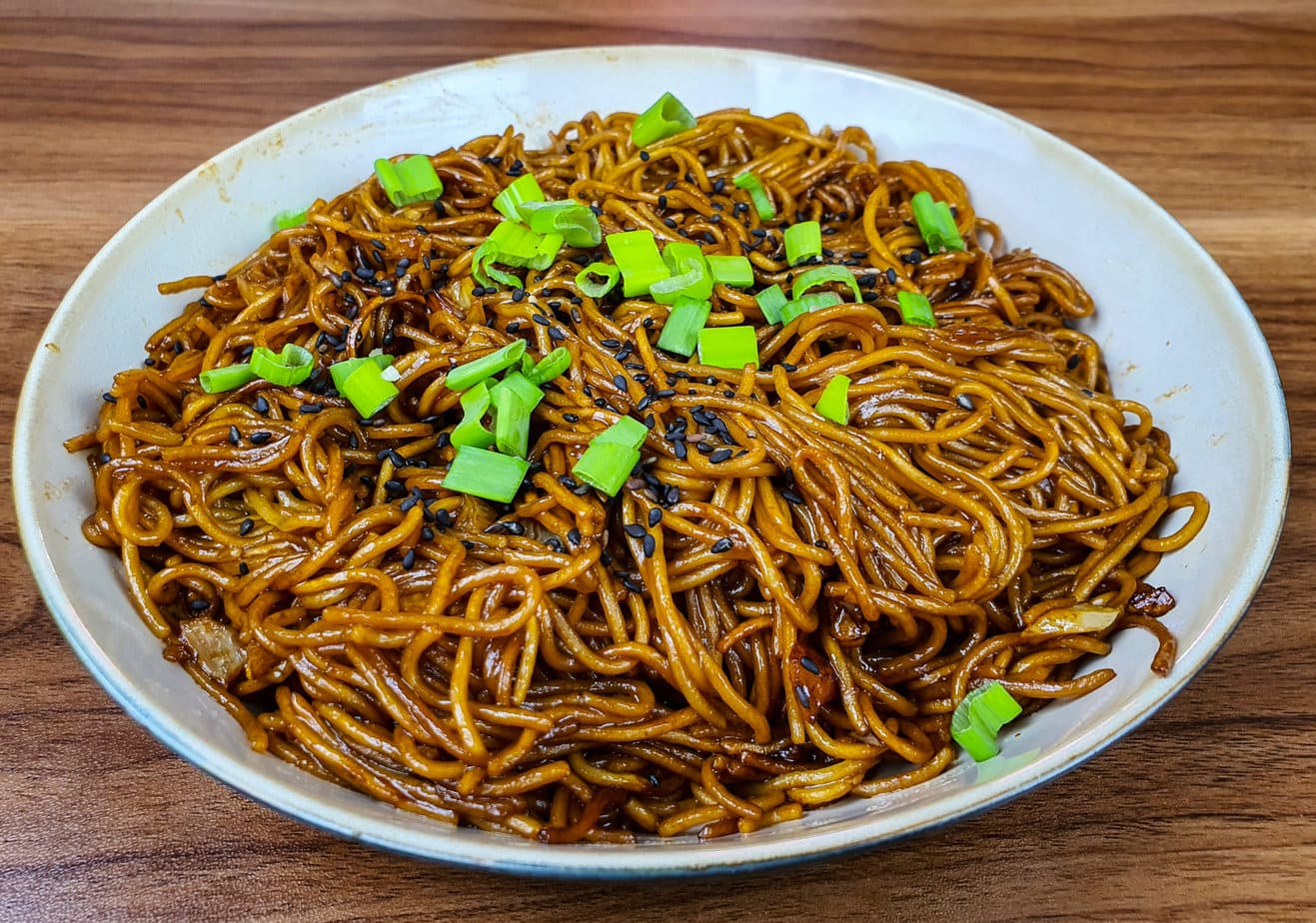
On its own it is not a full meal, but you can dress it up with a handful of choy sum or blanched pak choy, a fried egg, and a shower of grated carrot. It is perfect when you are too tired to lift more than a wok. A spoonful of Sichuan chilli oil takes it up a notch, or go all the way and make its cousins tian shui mian or xiaomian.
Ingredients for Sichuan noodles
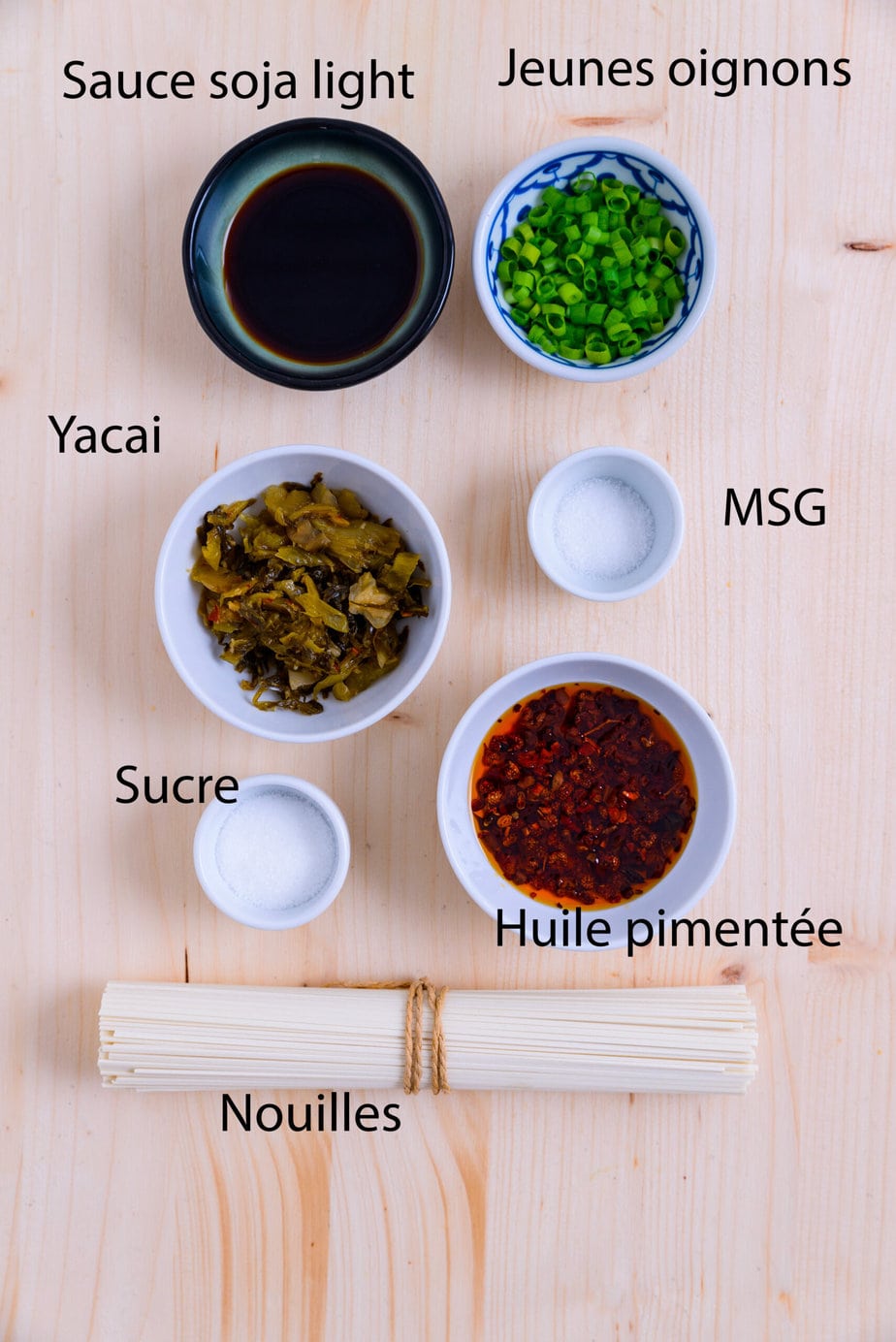
Of course glutamate is here, and I have probably said enough about it already. Light soy sauce deepens the umami, sugar smooths the edges, and Sichuan chilli oil plus Yacai bring a lively kick of heat and acidity.
I drew on the work of Chinese Cooking Demystified for this article
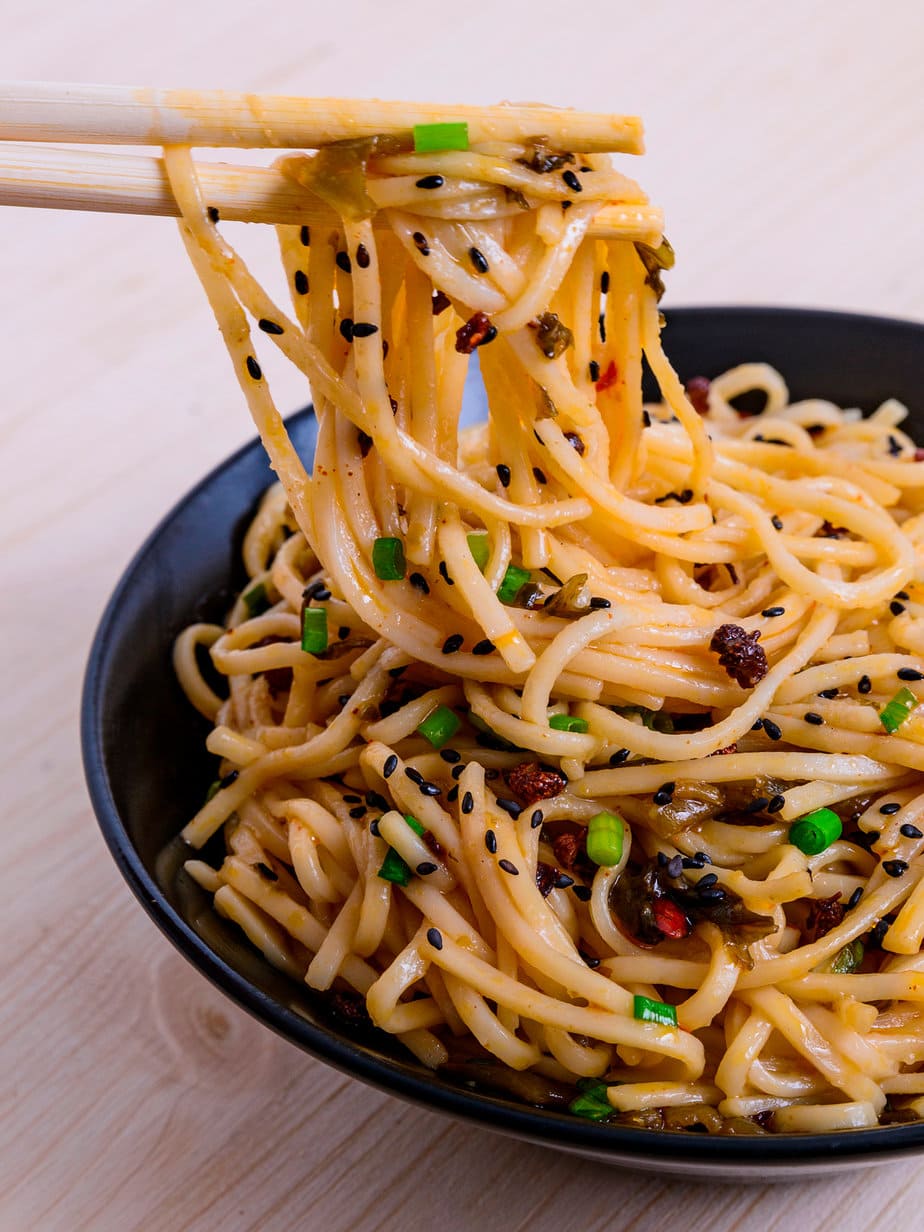
Sichuan-Style MSG Noodles 味精素面
Ingredients
- 125 g dried noodles
- 1 teaspoon MSG
- 1 tablespoon Sichuan chili oil
- 1 tablespoon yacai preserved mustard greens
- 0.5 teaspoon sugar
- 1 teaspoon light soy sauce
- 1 tablespoon thinly sliced green onions
Instructions
- In a serving bowl, combine the MSG, chili oil, yacai, sugar, soy sauce, and green onions. Stir until the MSG is fully dissolved.
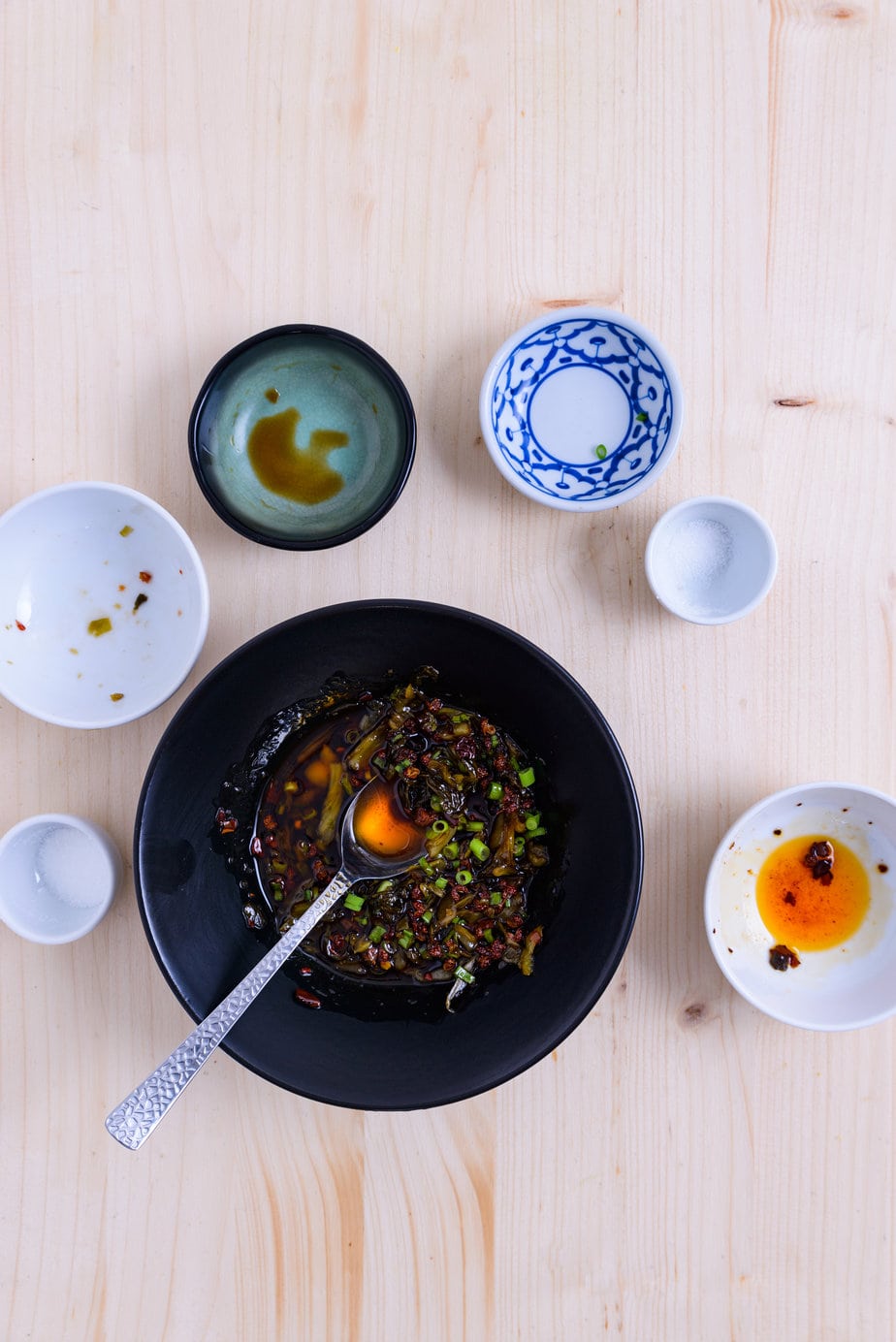
- Boil the noodles until just past al dente. Drain quickly, give them a brief shake, then immediately toss with the sauce until evenly coated.
